Traditionally, sailors can be superstitious characters and the members of the World Cruising Club are no different. Therefore, the next leg of the rally was leg 14, not 13! This leg would be a long passage of about 1400nm across the Indian Ocean from La Reunion to Richards Bay, on the east coast of South Africa. It was the passage that generally caused the most concern amongst rally participants, as boats would need to cross the notorious Agulhas Current.
The Agulhas Current flows south along the east coast of Africa and is one of the strongest currents in the world. It is narrow, swift and very strong, reaching speeds of up to 5 knots. It is crucial that it is crossed with the right wind conditions, as strong wind against the current can cause very difficult sea conditions. We are talking ship sinking conditions! We all watched the weather very carefully, but as the passage would take 10 days, it was almost impossible to get a reliable weather forecast for the whole passage. It was all about making the best choices with the information available and adjusting plans on route.
Monitoring the weather and knowing the characteristics of the boats and crew, skippers made their judgements as to when to leave La Reunion and, of course, which routes to take. Some boats left several days early and others a few days after the main fleet. We left with the main fleet on Wednesday 6th November 2024.
The passage started very well with winds of Force 4 (11-16 knots) from ESE. Heading in a westerly direction, we set the sails for a slow, downwind passage.
Then, one day into the crossing, disaster struck. We were sailing in light winds and we needed to change course slightly by turning into wind. We carefully centred the mainsail to gybe the boom across to the other side of the boat. All was going really well, but then, to our surprise, and horror, the main sail just snapped! One second, we had a main sail and, the next second, it was in two pieces! We were not really sure how this had happened, possibly a flaw in the material, but the implication was that for the rest of the journey (1250nm) we would only have our genoa. Luckily for us, our genoa is quite large (150%), so we actually use it more than the main.
The passage continued well with winds between Force 2 (4-6 knots) and Force 4 (11-16 knots) and we steadily made our way towards the southern tip of Madagascar. We were aware of the impact of strong current swirls in this area, so tried to plan our route to ensure favourable current. Generally, this worked well and, at times, we had an extra 3 knots. This all helped our overall boat speed, with Escapade reaching over 9 knots at times.
As we had reached the half way point, we were passing Madagascar and starting to pick our route to head west across to Richards Bay. We were experiencing mixed winds (SE/S/NE/N), but they were generally stronger at Force 5 (17-20 knots). Even with a reefed genoa, we still managed to keep our speed up at between 6 and 8 knots.
Approaching Richards Bay from the north east, the wind was in our favour and, combined with 4 knots from the Agulhas Current, we set new records of speeds of over 10 knots. The increased wind and favourable current gave us a speedy end to our epic passage. We arrived in Richards Bay after a passage of 1420nm in just under 10 days. It was time to celebrate safely crossing the Indian Ocean.
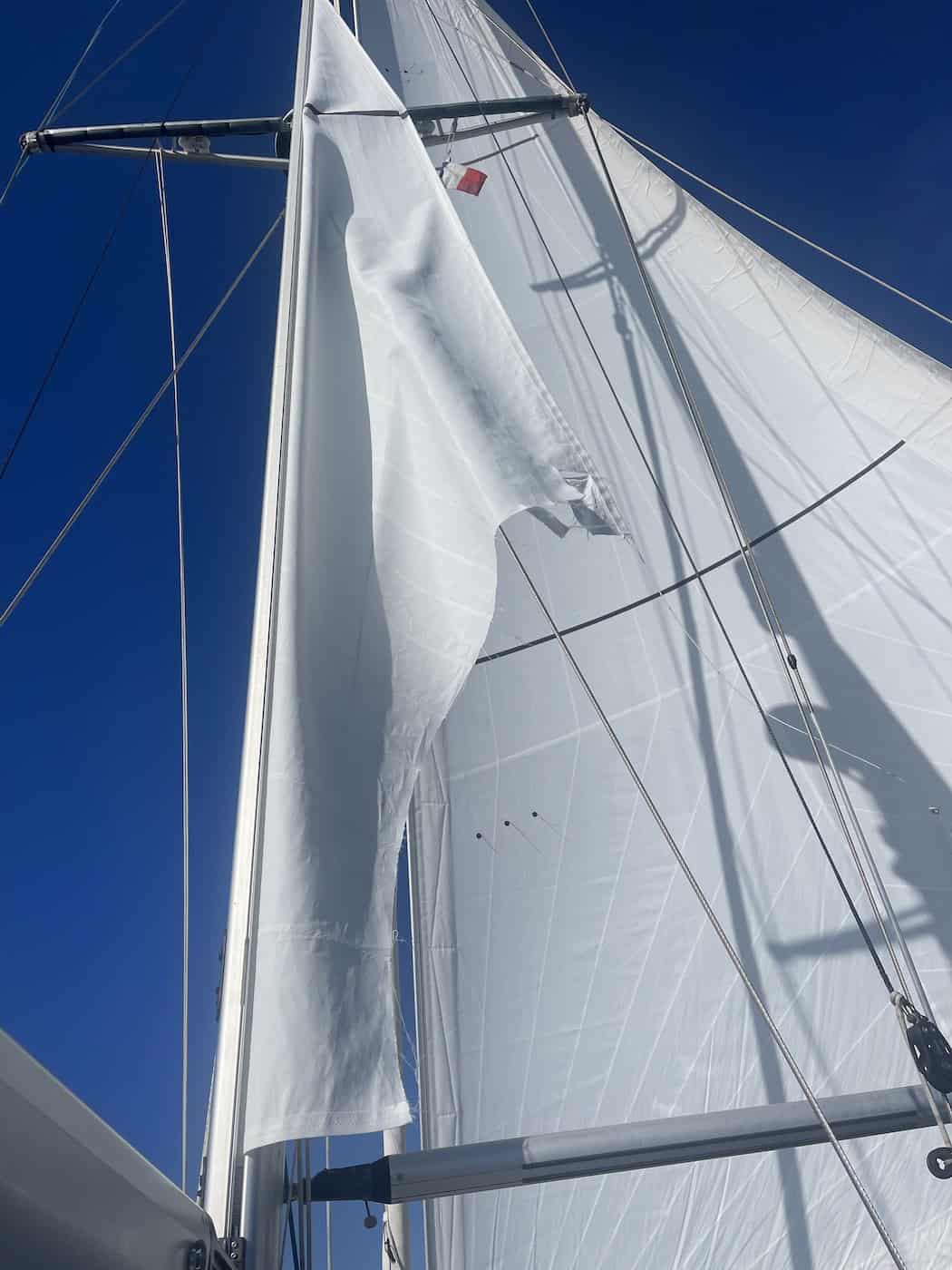
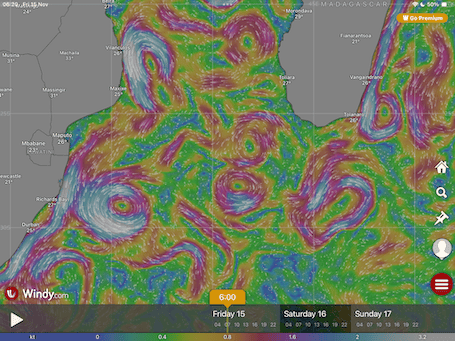
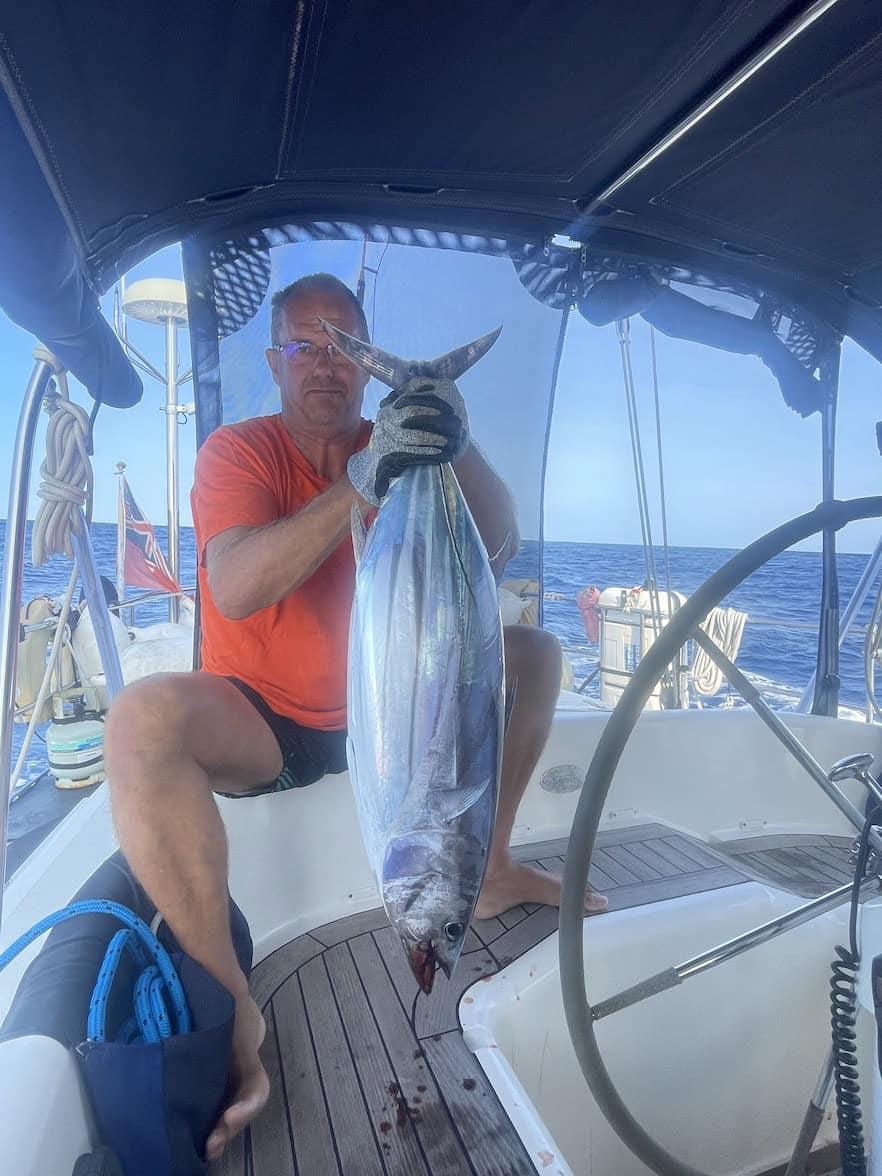
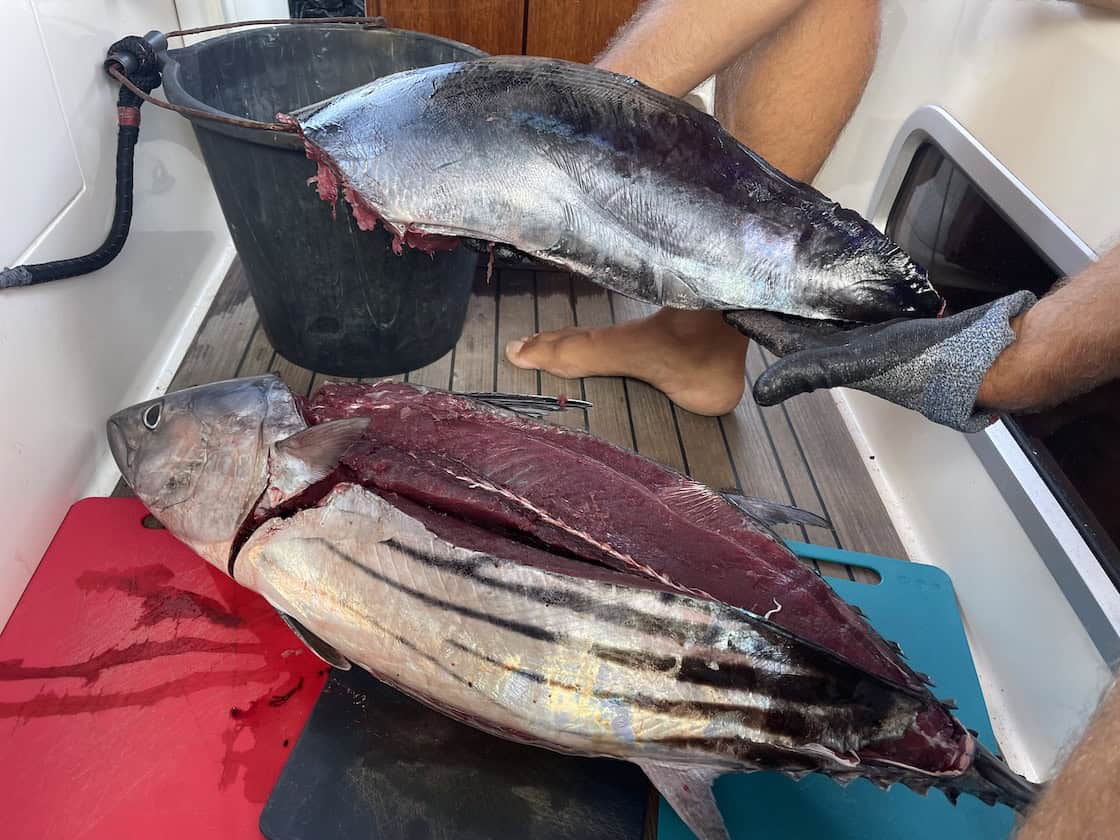
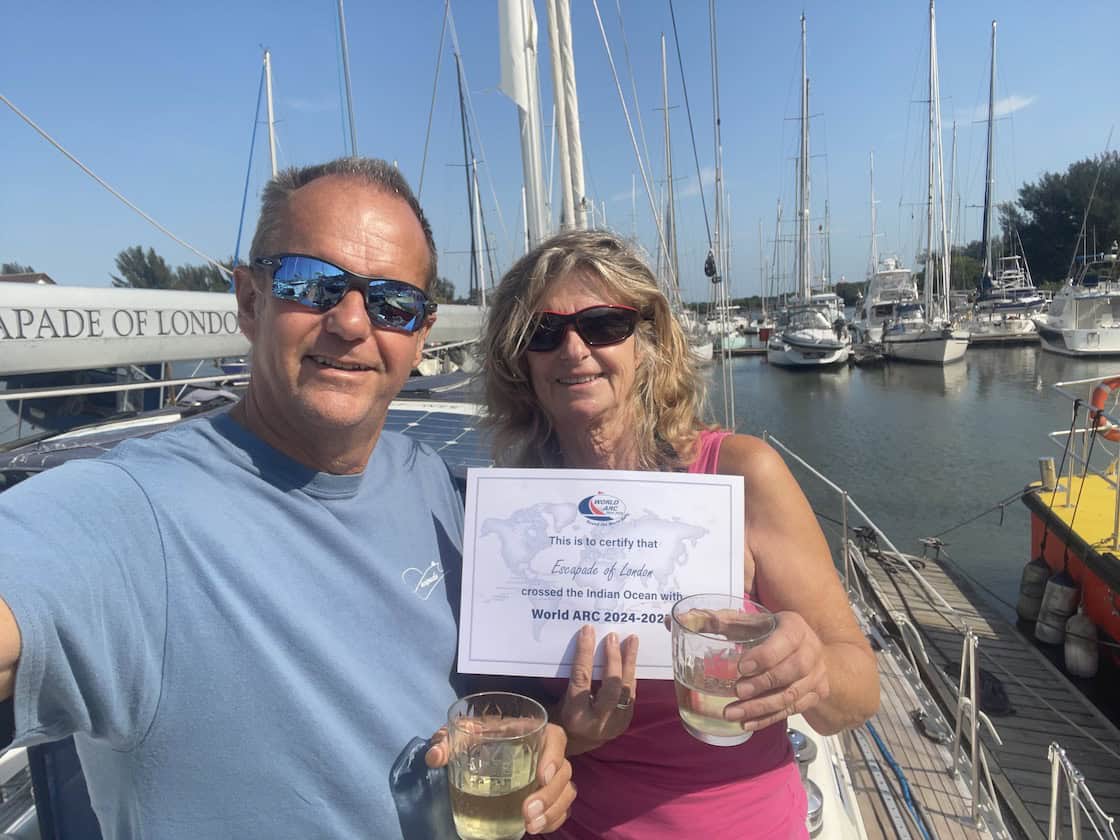
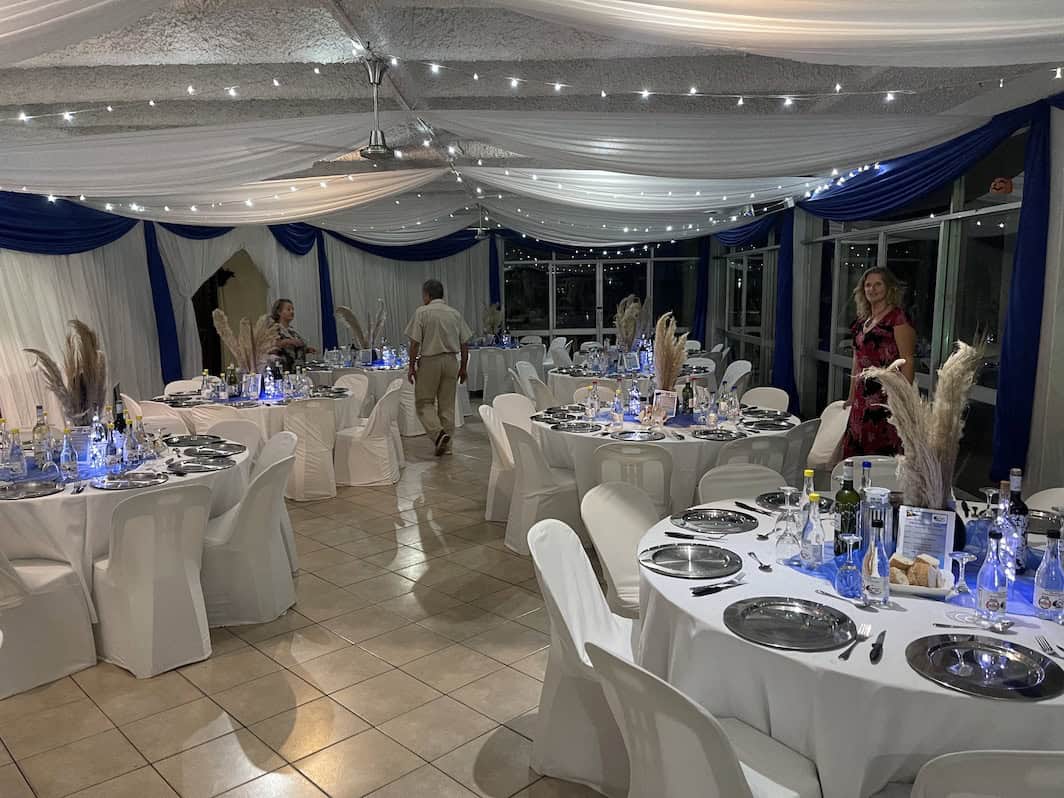
Epic voyage and congrats on how you coped without your mainsail.
Many thanks. Life is never dull when you own a boat!
Wow! You are both very skilful and resilient. Enjoy this new section of the journey.
Thank you!
We have had a brilliant couple of months in South Africa. More posts to follow.
Currently on route to Brazil. Should arrive on Saturday……
Hope all is well with you and you are planning your next trip.
X
You are an amazing couple how you coped with crossing that ocean,what a welcome you had at yacht Club
Hi,
Thank you! We have certainly had some interesting experiences.
Great to hear from you. So pleased that you continue to share our adventures.
Hope you are well and keeping busy!
Xx